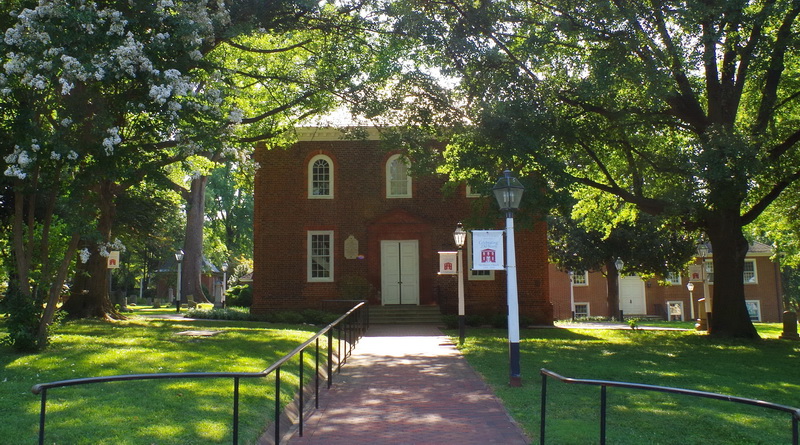Historic Falls Church, Virginia 2019
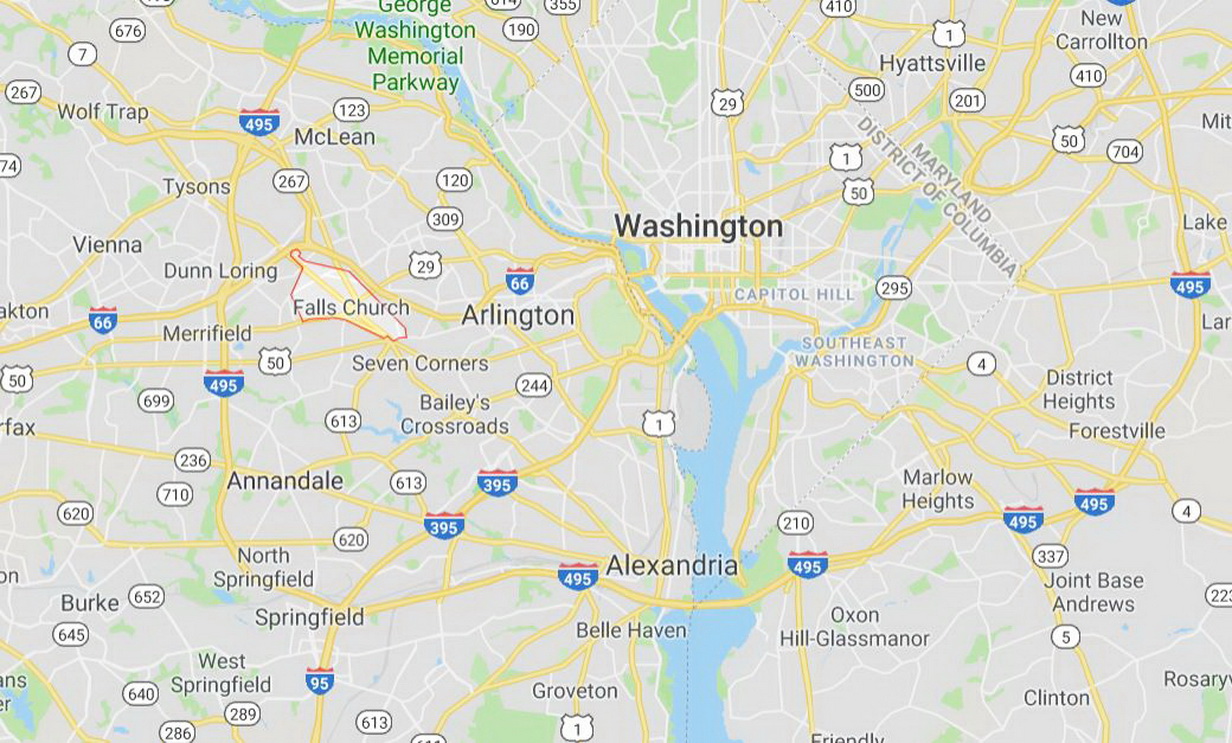 Today, my wife and I are at Falls Church, Virginia. That is, we are at both the church and at the city, each having the same name. It is the site of a memorable family event this weekend. Our lovely granddaughter, Libby, will marry her handsome and charming Caleb this Saturday. (My photos* of the wedding.) Our hotel is nearby and we decide to explore the church site.
Today, my wife and I are at Falls Church, Virginia. That is, we are at both the church and at the city, each having the same name. It is the site of a memorable family event this weekend. Our lovely granddaughter, Libby, will marry her handsome and charming Caleb this Saturday. (My photos* of the wedding.) Our hotel is nearby and we decide to explore the church site.
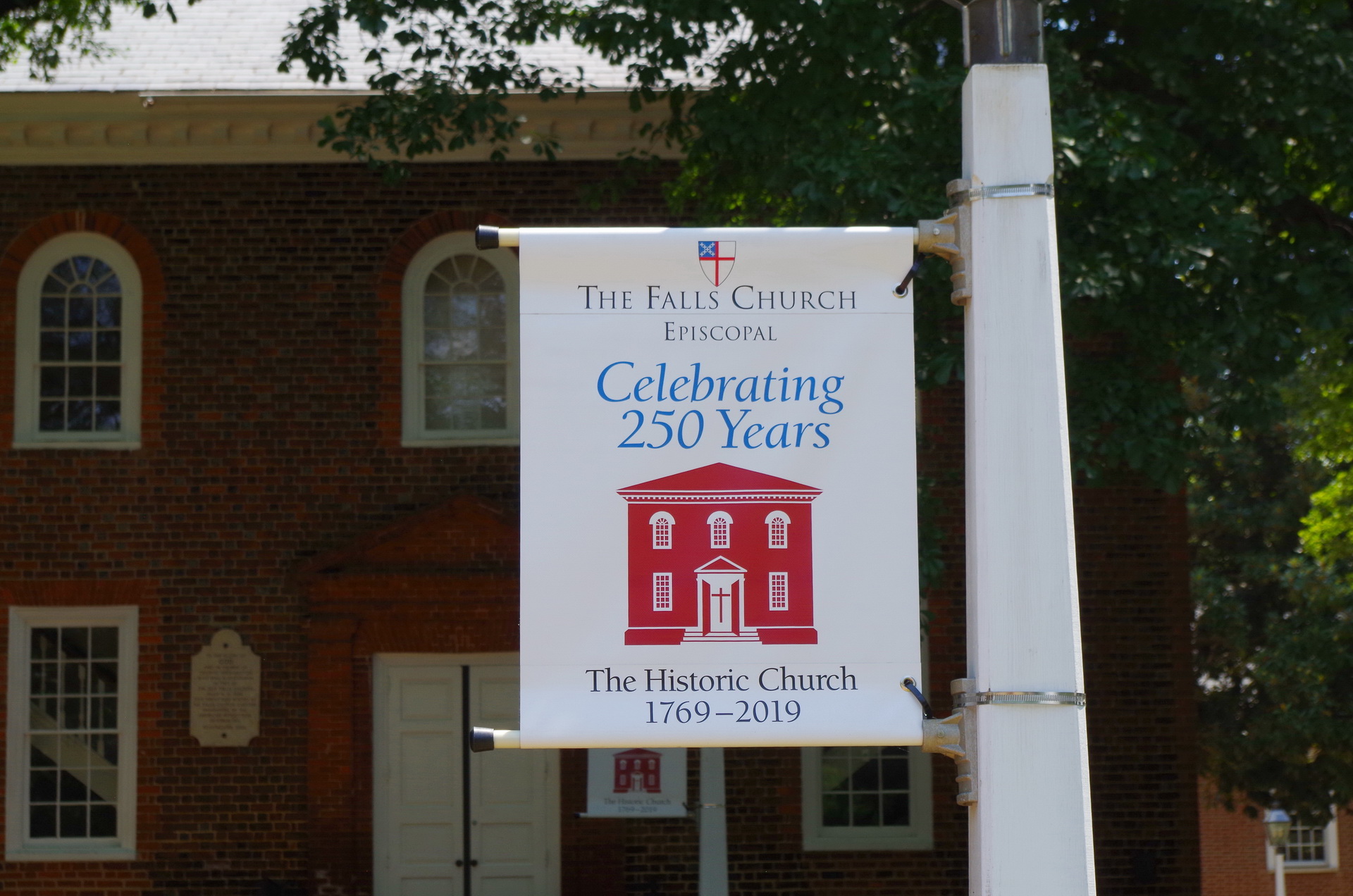 The church, after which the city was named, is an exceptional historic landmark. A church was first established here in 1732, named for waterfalls on the nearby Potomac River. This brick structure dates from 1769. It was thus built during “colonial times.” Virginia was the first settled British colony in America and it also proved to be the most prosperous. Now celebrating its 250th year, the historic building predates both the American War of Independence (1776) and the Civil War (1861-64).
The church, after which the city was named, is an exceptional historic landmark. A church was first established here in 1732, named for waterfalls on the nearby Potomac River. This brick structure dates from 1769. It was thus built during “colonial times.” Virginia was the first settled British colony in America and it also proved to be the most prosperous. Now celebrating its 250th year, the historic building predates both the American War of Independence (1776) and the Civil War (1861-64).
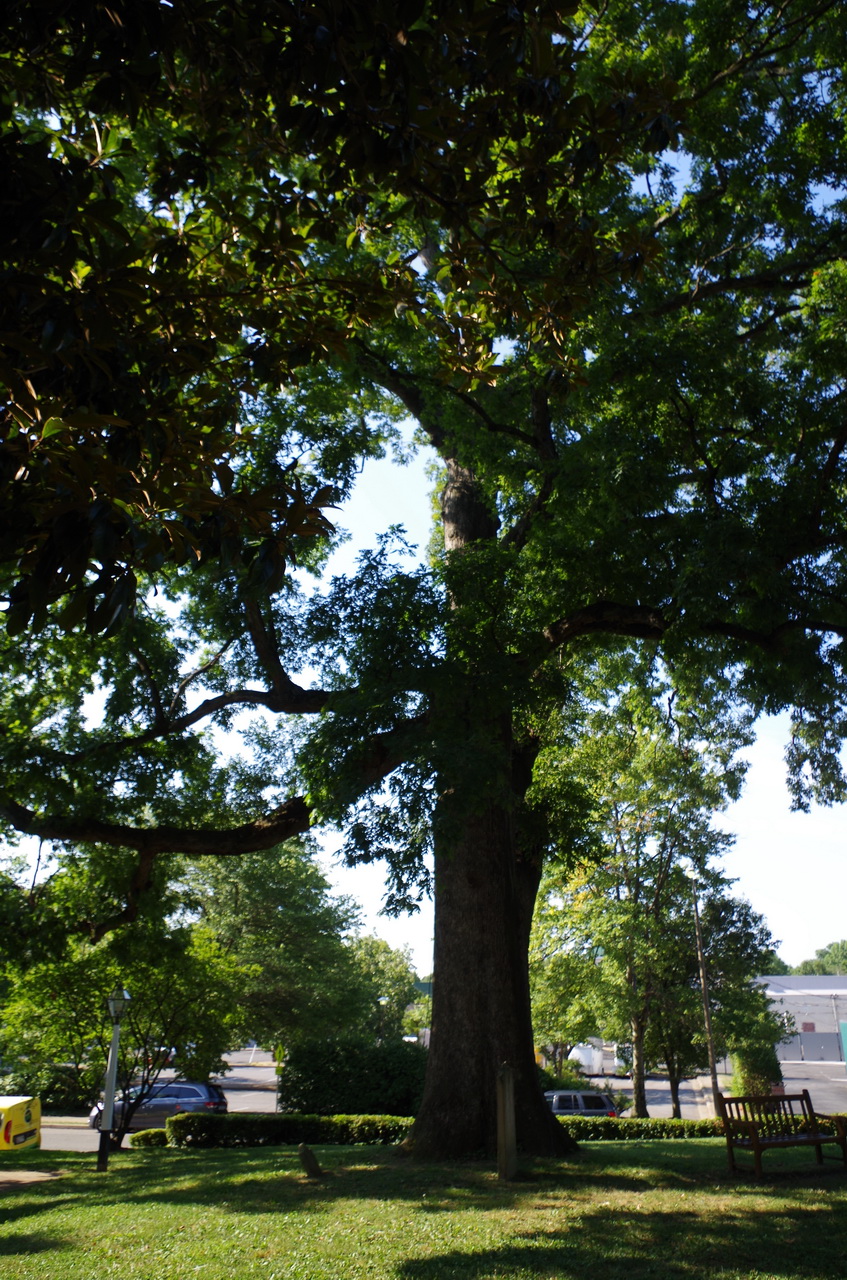 A massive tree on the property is a reminder of the almost 300-year history of this site. It is a special place and special time to be here. But there are graves here, memorials to significant personalities, and other bits of history to be savored. I’ve been inspired by this visit to learn more about this place and colonial times.
A massive tree on the property is a reminder of the almost 300-year history of this site. It is a special place and special time to be here. But there are graves here, memorials to significant personalities, and other bits of history to be savored. I’ve been inspired by this visit to learn more about this place and colonial times.
In Virginia, as in so many other parts of the western world, churches were central to community life. Indeed, they dominated life then in much the same way as big government and media dominate life today. There were nationally recognized, state-supported churches in early America, primarily the Church of England. It had status due to its close relationship with government, which in colonial times, meant it support came from the British parliament and the monarchy. In these early times we say that Church and State were closely integrated.
Falls Church was not only a place of worship but was central to all the important events of life. Local churches recorded all births, marriages, and deaths for the community. Indeed, until the mid-1900s in own family experience in Canada, seniors applying for old-age pensions frequently required verification of birth dates and marriages from local church records.
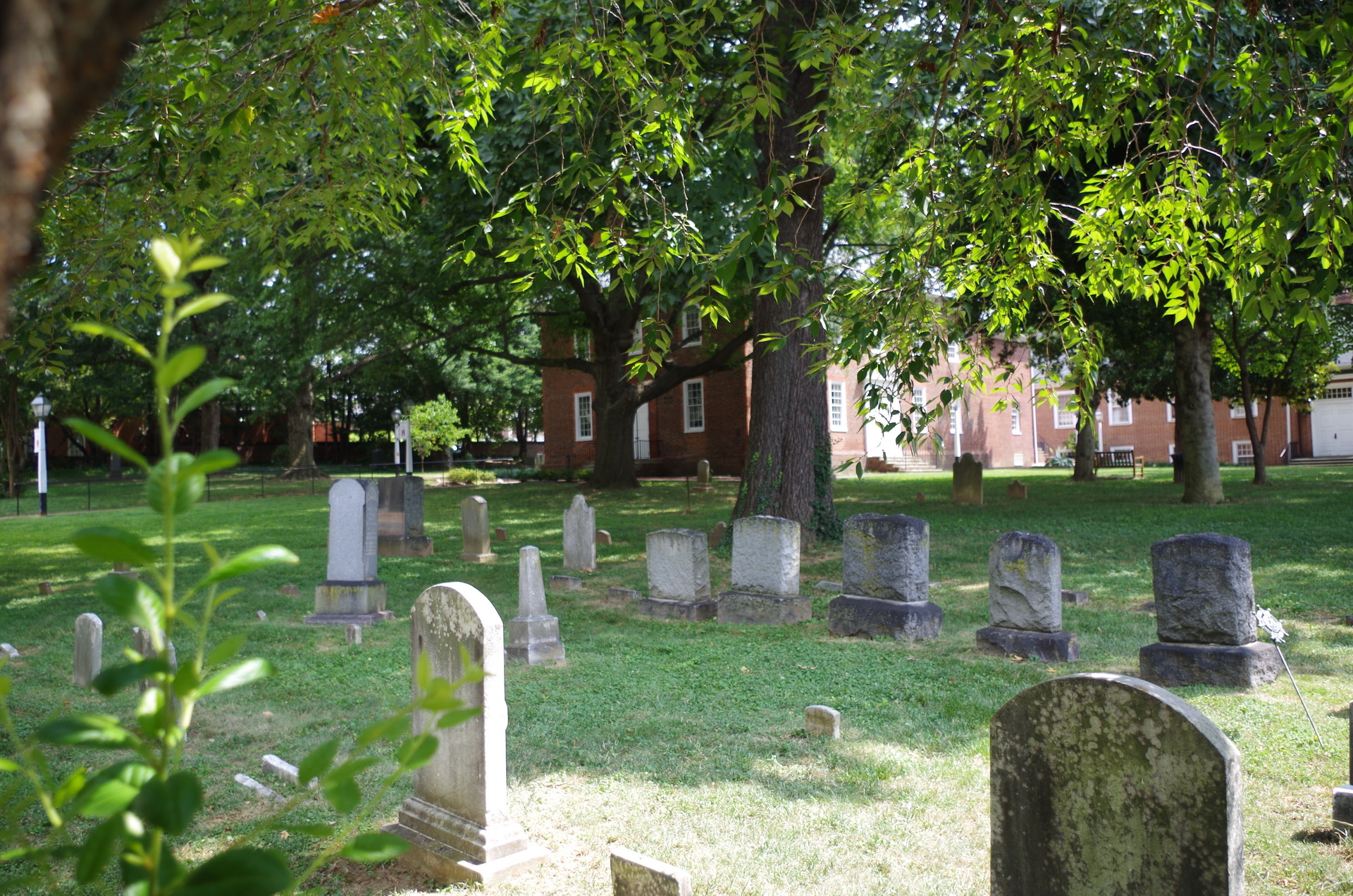 In the early years farming was the predominant livelihood of Virginia settlers and tobacco was the primary crop. Labor was provided not only by the many children of a local farmer, but frequently also by indentured servants. (These were people from debtor prisons, often from back in Britain, who would need to work a specified number of years as servants, before regaining their freedom). But the major source of labor during colonial times, and later also up to the time of the Civil War, was African slaves transported to the colonies by British ships.
In the early years farming was the predominant livelihood of Virginia settlers and tobacco was the primary crop. Labor was provided not only by the many children of a local farmer, but frequently also by indentured servants. (These were people from debtor prisons, often from back in Britain, who would need to work a specified number of years as servants, before regaining their freedom). But the major source of labor during colonial times, and later also up to the time of the Civil War, was African slaves transported to the colonies by British ships.
Landowners (many enjoying inherited wealth from overseas) would be highly influential in these early communities. Leadership skills were often identified through local church involvement before individuals moved on to greater social and political responsibilities in civic governance.
Much forgotten these days, the church in these times assumed major responsibilities for the surrounding community. A local church was the centre of a parish, a defined geographical area and community that was served by the local church. In the absence of modern forms of civic government, the parish in early times provided for various practical needs of the community including property decisions, schooling, some limited social services and heath care for the poor. For much of Europe, America and Canada, independent government services developed only slowly alongside services offered by these early parish councils.
Americans today are strongly committed to what is known as “separation of Church and State.” Much of this commitment is rooted in the history of America as it chose to break away from its colonial past. In America, rejection of this integrated relationship resulted in withdrawal of support from the Church of England and its many local churches. Churches, such as this one, fell into disrepair.
The political move to independence hastened the separation of Church and State and spurred the rapid development of local, state, and national civic government. As explained below, two of the architects of the American constitution came from this particular church.
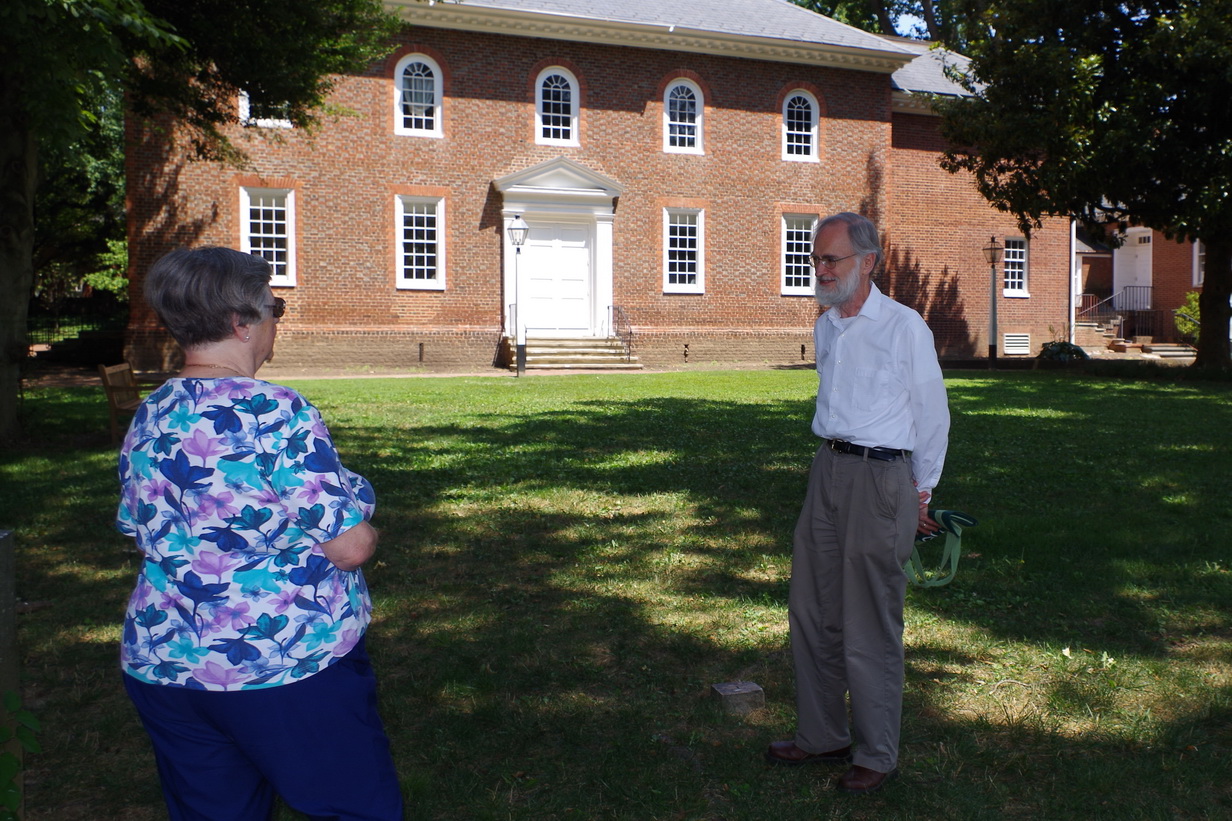 Today as we walked about the grounds, we were joined by a gentleman who introduced himself as the Falls Church historian. We explained our presence as visitors from Saskatchewan, Canada. To our surprise, he knew our part of the world and claimed he had once motored through our hometown of Regina as young man.
Today as we walked about the grounds, we were joined by a gentleman who introduced himself as the Falls Church historian. We explained our presence as visitors from Saskatchewan, Canada. To our surprise, he knew our part of the world and claimed he had once motored through our hometown of Regina as young man.
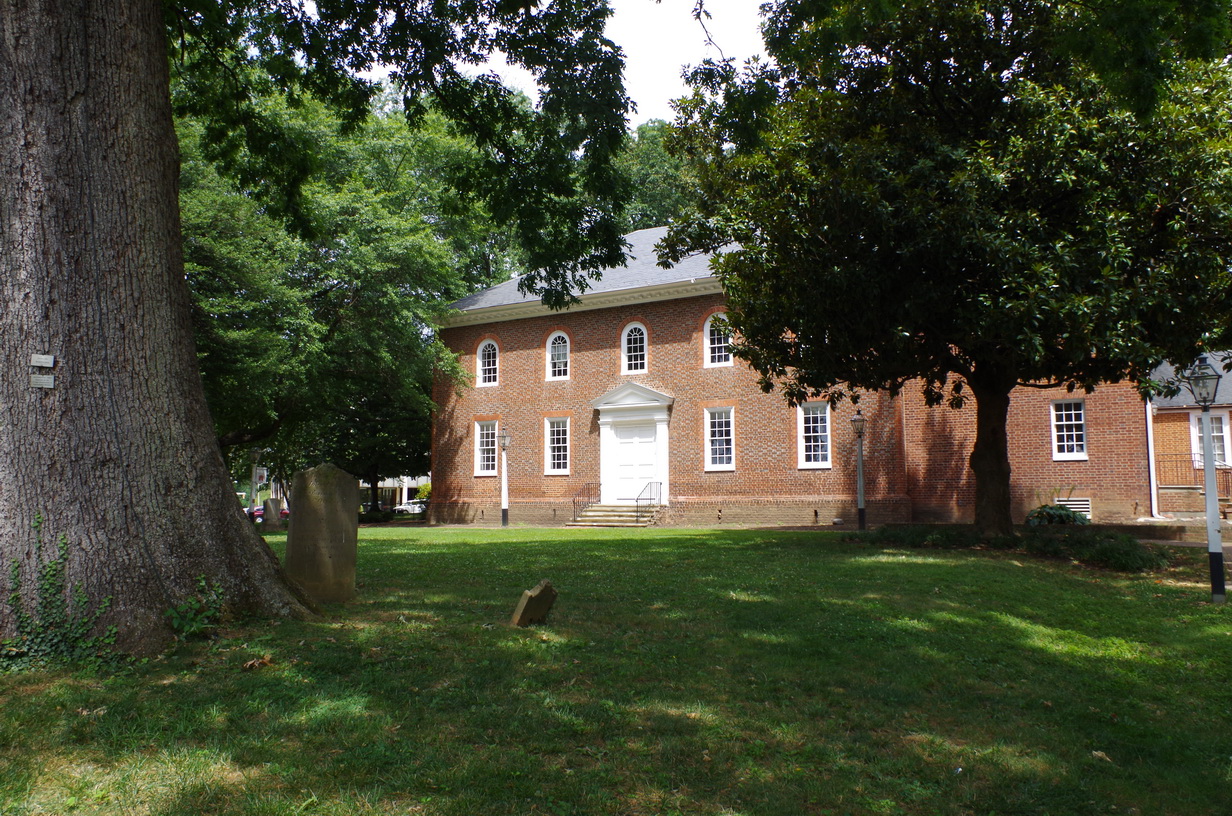 We learned from him that the church yard was the official burial site for all local inhabitants up to the early 1800s. The oldest grave, located under a great tree, is dated 1805. It means that for a period of 75 years or more, many parishioners were buried here in graves that now bear no markings.
We learned from him that the church yard was the official burial site for all local inhabitants up to the early 1800s. The oldest grave, located under a great tree, is dated 1805. It means that for a period of 75 years or more, many parishioners were buried here in graves that now bear no markings.
As political support withdrew from churches strongly linked to Britain, local people chose to organized themselves around such church traditions as Baptist. These alternatives practiced local (congregational) governance. In fact, a Baptist church was once erected just next to the present site of the Falls Church. Due to prescribed laws concerning burials, we found it interesting that a famous pastor of this adjacent Baptist Church, John Reed, is buried here on the grounds of Falls Church. (He happened to be an abolitionist–advocating for the end to slavery during the Civil War years. He was captured and executed by forces loyal to the Confederacy.)
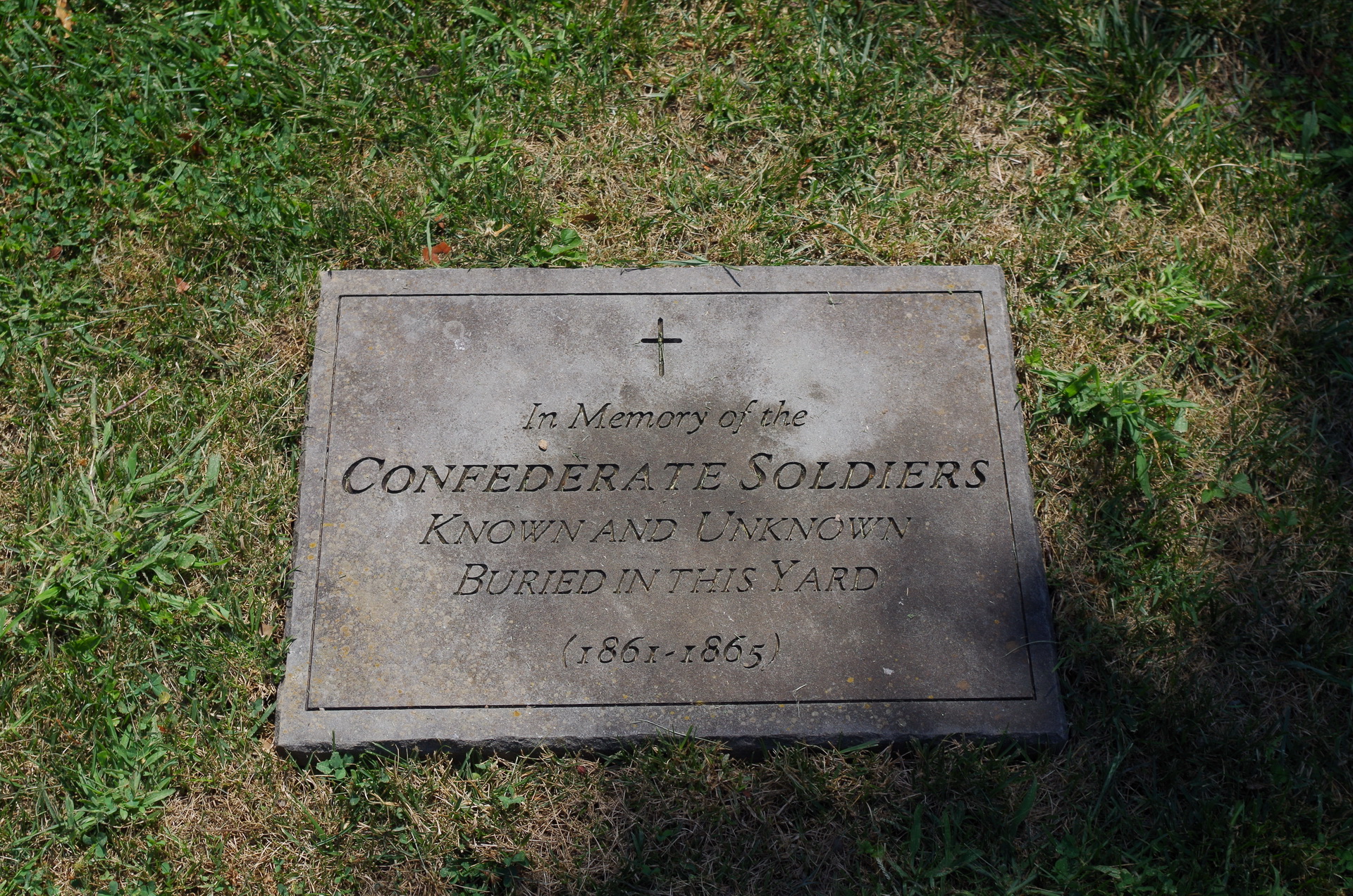
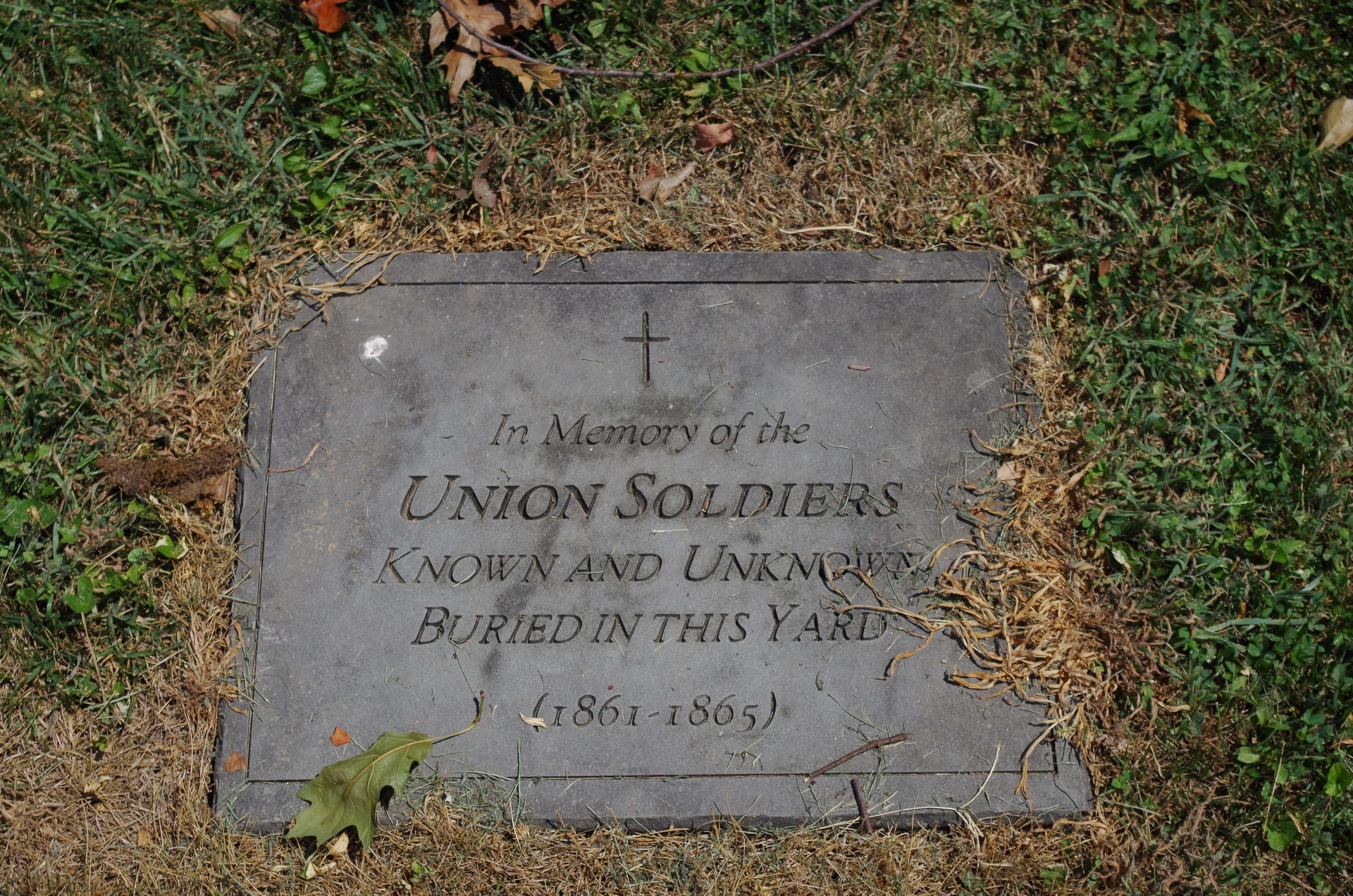 Markers around the site provide interesting historic details. For instance, during the American Civil War, many battles between the Unionists (north) and the Confederates (south) occurred here in Virginia. Inscriptions on grave stones and other markers celebrate heroes on both sides of the conflict.
Markers around the site provide interesting historic details. For instance, during the American Civil War, many battles between the Unionists (north) and the Confederates (south) occurred here in Virginia. Inscriptions on grave stones and other markers celebrate heroes on both sides of the conflict.
A marker reminds us that slaves were used in the construction of Falls Church. Viewed now as a major moral issue of those times, the plaque acknowledges the complicity of the church in the historical practice of slavery.
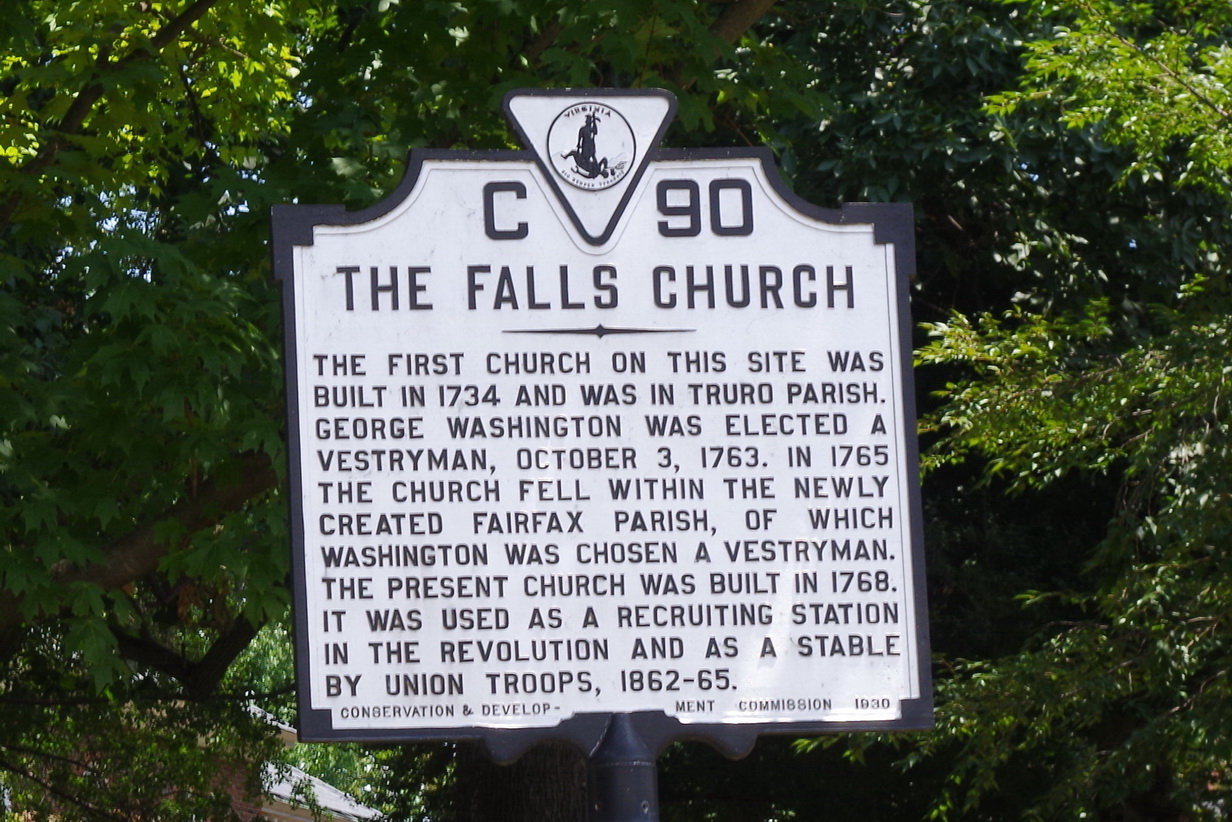 Ten years prior to becoming the first president of the new United States, George Washington served as a church and parish vestryman. (Think of him maybe as a local church council member.) One of his contemporaries, George Mason, is also memorialized with a marker on the interior of the church. Both men made huge contributions to the formation of the new American nation and its constitution. One can only imagine the debates that might have occurred regularly within the walls of these church buildings.
Ten years prior to becoming the first president of the new United States, George Washington served as a church and parish vestryman. (Think of him maybe as a local church council member.) One of his contemporaries, George Mason, is also memorialized with a marker on the interior of the church. Both men made huge contributions to the formation of the new American nation and its constitution. One can only imagine the debates that might have occurred regularly within the walls of these church buildings.
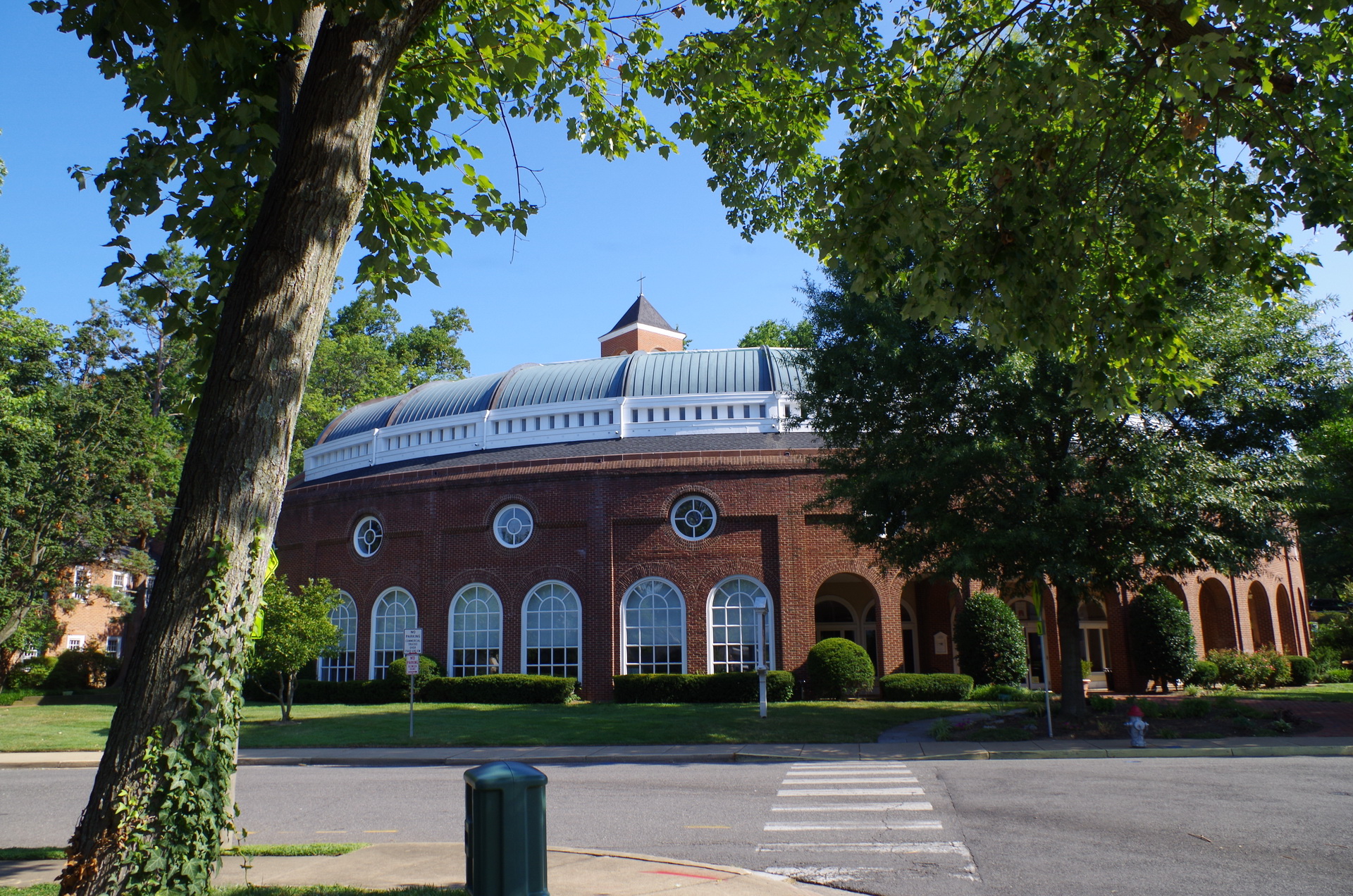 In more recent years, major additions have been added and a new, much larger modern sanctuary now stands back of the original church building (see link below to more photos).
In more recent years, major additions have been added and a new, much larger modern sanctuary now stands back of the original church building (see link below to more photos).
This has been the home church setting for families meeting here this weekend. For those of us who have come from far and wide, our family celebration is enriched by the history and beauty of this fascinating site.
Additional photos and historic details:
*Note: Photos of the wedding are currently on the MSN OneDrive system which cannot be accessed from within China.
First published: 2019/08/01
Latest revision: 2020/03/27
